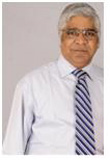 “Making geography history,” “making distance meaningless,” “a hospital in your pocket,” “cost effective, need based healthcare for everyone, anytime, anywhere,” are all hyperbole—fertile imagination working overtime and hype. But is it possible that in my lifetime I may actually see this happen? Improbable, yes. Impossible, no. According to the Internet and Mobile Association of India, by June 2014 243 million people in India will have internet access, with 75 million of those living in rural India. India will be second only to China in terms internet use. 130 million people in India now access the internet via smart phones. 50% of urban internet users access the internet daily. So is healthcare via a phone possible in an “emerging economy?” Can this be the equivalent of buying a pizza or booking a ticket online?
“Making geography history,” “making distance meaningless,” “a hospital in your pocket,” “cost effective, need based healthcare for everyone, anytime, anywhere,” are all hyperbole—fertile imagination working overtime and hype. But is it possible that in my lifetime I may actually see this happen? Improbable, yes. Impossible, no. According to the Internet and Mobile Association of India, by June 2014 243 million people in India will have internet access, with 75 million of those living in rural India. India will be second only to China in terms internet use. 130 million people in India now access the internet via smart phones. 50% of urban internet users access the internet daily. So is healthcare via a phone possible in an “emerging economy?” Can this be the equivalent of buying a pizza or booking a ticket online?
Encounters between doctors and patients have always been face to face. I had serious concerns about whether India was ready to receive healthcare via a phone. From October 2012 to April 2013, 1866 individuals from five states were interviewed, 31% from rural areas. 22% from rural areas had smart phones (46% in urban). Surprisingly 48% in rural India and 72% in urban areas had heard of mobile health (mHealth). I would love to do a similar study in the UK or the US. Perhaps it will clearly show that we are no longer following the West, not even piggy backing, but just leap frogging. In 2011, when I carried out a smaller study at a world renowned temple of technology in Chennai, the awareness of mHealth was dismally low. The most reassuring finding now was that 55% of respondents (urban and rural) showed a very strong intent to use mobile phones for healthcare, if available. Mobile network operators in India should wake up to this. Their role in this will be much more than offering mobile TV—Tendulkar not withstanding.
Several studies have clearly shown that even with 900 million phones you can only talk so much. Revenue will come only from value added services. In accordance with “The National e-Governance Plan of India,” 100 000 “Common Service Centres” are being set up to cover India’s 600 000 villages. These internet enabled, revenue generating, self sustaining kiosks run by a village tech entrepreneur will offer various services to the community. A fortnight ago a memorandum of understanding was signed adding healthcare. Bluetooth enabled glucometers, wireless ECGs, sphygmomanometers, and other peripheral medical devices will ensure that remote healthcare becomes a reality. The internet is also being used to provide authenticated validated health information to villagers in India. I strongly endorse the NHS view that patient empowerment is more important than antibiotics. On 6 June 2011 the United Nations declared that internet access is a human right. Who knows, in the next decade healthcare via the internet may be a reality for the one sixth of humanity living in India. As someone who qualified in the BC era (before computers) these are particularly exciting times.
K Ganapathy is a past president of the Neurological Society of India and the Telemedicine Society of India.
I declare that that I have read and understood the BMJ Group policy on declaration of interests. I have no relevant interests to declare